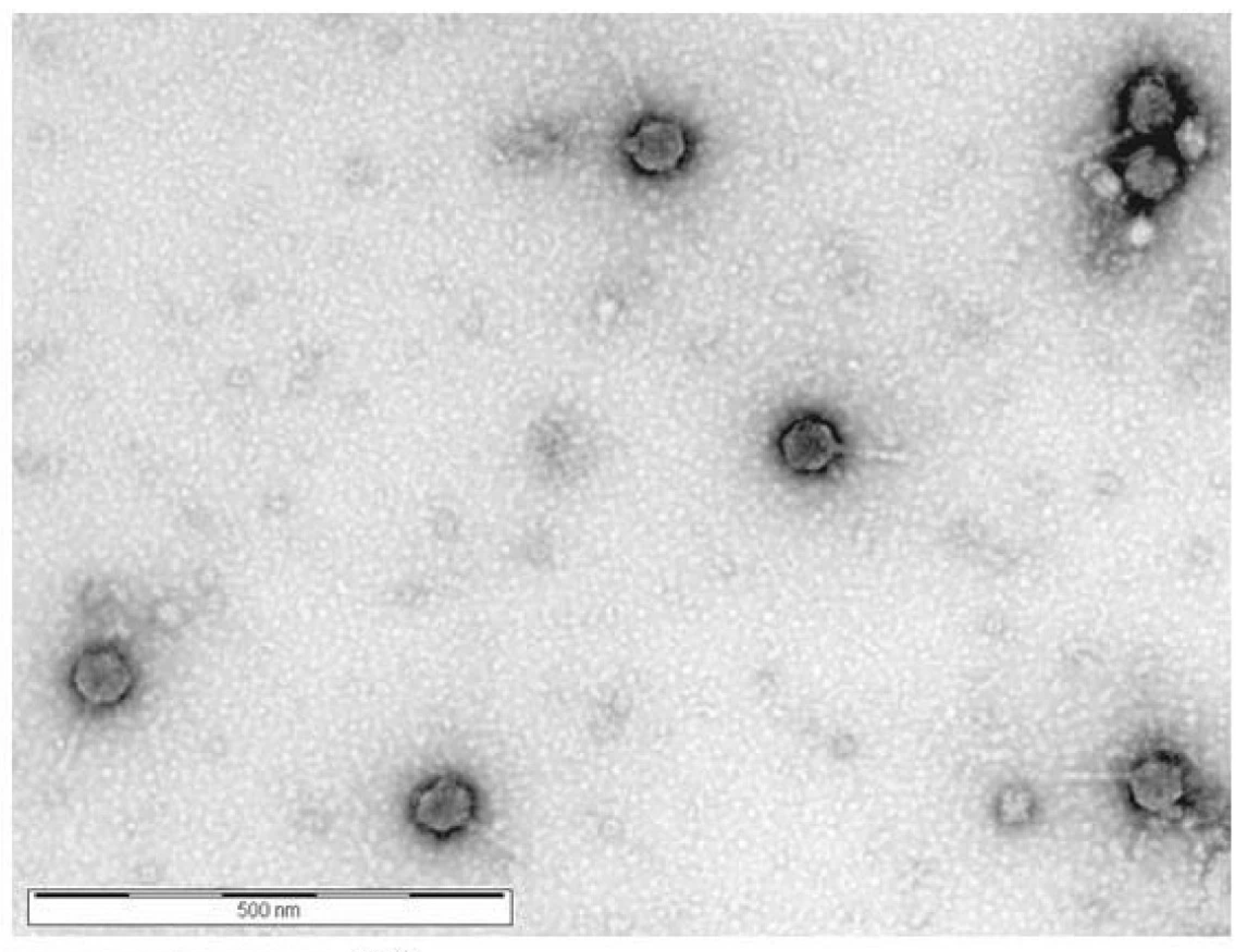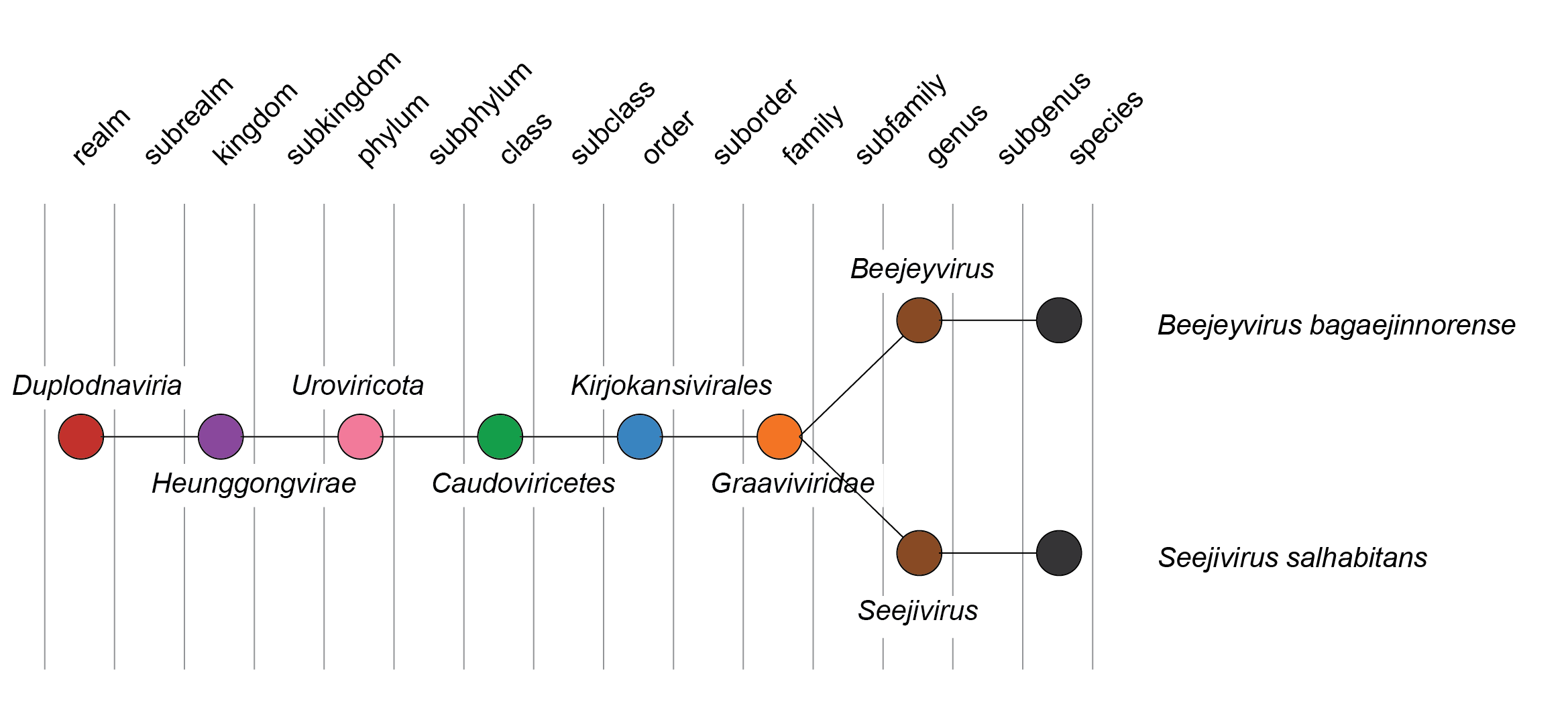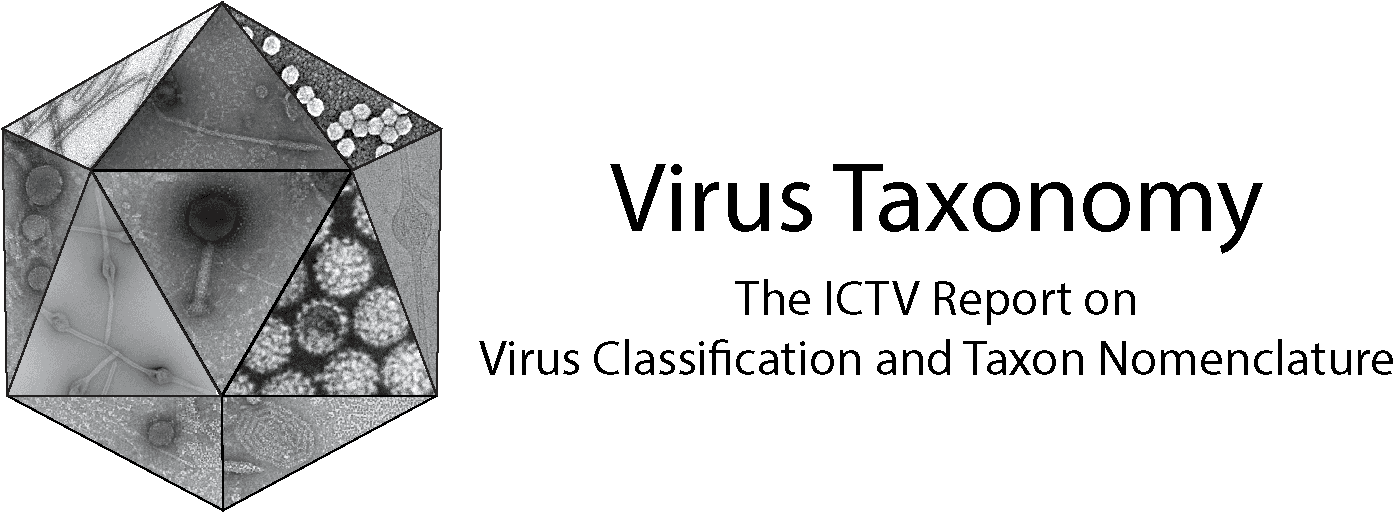Family: Graaviviridae (Interim Report)
This is a summary page created by the ICTV Report Editors using information from associated Taxonomic Proposals and the Master Species List.
Edited by: Mart Krupovic
Posted: June 2023, updated December 2024
Summary
The family Graaviviridae includes dsDNA viruses with icosahedral capsids and long non-contractile tails. Graaviviruses infect hyperhalophilic archaea of Halorubrum sp. (Table 1 Graaviviridae). The family Graaviviridae was established in 2022 (Master Species List 37).
Table 1 Graaviviridae. Characteristics of members of the family Graaviviridae.
| Characteristic | Description |
| Example | Halorubrum virus BJ1 (AM419438), species Beejeyvirus bagaejinnorense, genus Beejeyvirus |
| Virion | Icosahedral capsid of 55 nm in diameter and helical non-contractile tail of 70 nm in length (siphovirus morphology) (Figure 1 Graaviviridae) |
| Genome | Linear, dsDNA genome of 39–42 kbp (Figure 2 Graaviviridae) |
| Host range | Hyperhalophilic archaea of Halorubrum sp. |
| Taxonomy | Realm Duplodnaviria, kingdom Heunggongvirae, phylum Uroviricota, class Caudoviricetes, order Kirjokansivirales: 2 genera and 2 species (Figure 3 Graaviviridae) |
 |
| Figure 1 Graaviviridae. Electron micrograph image of BJ1 (from Pagaling et al., (2007) Sequence analysis of an Archaeal virus isolated from a hypersaline lake in Inner Mongolia, China, BMC Genomics 9:410 under a Creative Commons Attribution 4.0 International License) |
 |
| Figure 2 Graaviviridae. Genome organisation of Halorubrum virus BJ1, a member of the family Graaviviridae. Boxes indicate open reading frames as annotated on GenBank accession AM419438. |
 |
| Figure 3 Graaviviridae. Taxonomy of the family Graaviviridae. |
Derivation of name
Graaviviridae: From Finnish graavi, meaning raw cooking of fish with salt

